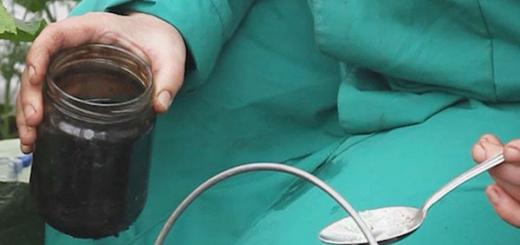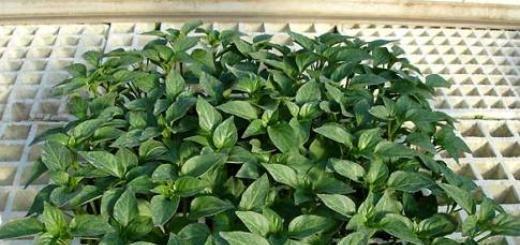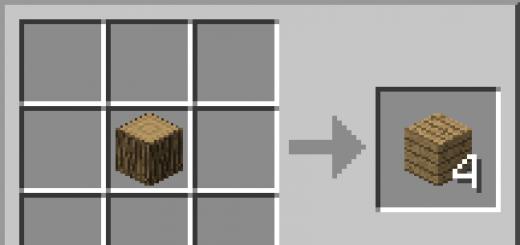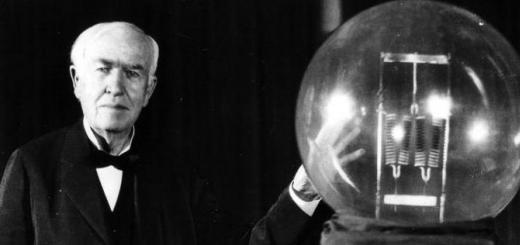A decrease in pressure in the hot water system, a change in the color of the water, the appearance of the smell of hydrogen sulfide - all these signs indicate the need for preventive maintenance of the BKN. Flushing the inside of an indirect heating boiler using chemical reagents will eliminate the cause of the malfunction and improve the quality of the hot water supply. Regular inspection and removal of rust and scale will extend the life of the water heater.
Work on washing the BKN is carried out in a service center or at home. If desired, you can wash the heater yourself.
How often should boilers be flushed?
In the operating instructions, manufacturers indicate the need for regular maintenance. The boiler is washed once a year, provided that there are no visible manifestations of internal malfunctions in the operation of the capacitive storage tank:- reduced pressure in the hot pipeline;
- decrease in heating temperature;
- unpleasant smell of hydrogen sulfide when using hot water;
- signs of rust.
Servicing an indirect heating boiler is easy to do with your own hands, but it is better to have serious breakdowns repaired by specialists. You can clean the BKN of foreign objects and rinse the heat exchanger and tank; you can remove scale and rust yourself. For minor repairs: replacing the sealing gasket and magnesium anode, no special skills are required. All you need is a screwdriver and a minimum set of plumbing tools.
How to drain water from an indirect heating boiler
 The BKN manual indicates the need to empty the storage tank at least twice a year. This measure will help prevent the formation of scale on the walls and heat exchanger. You will also need to drain the water before performing scheduled maintenance.
The BKN manual indicates the need to empty the storage tank at least twice a year. This measure will help prevent the formation of scale on the walls and heat exchanger. You will also need to drain the water before performing scheduled maintenance. The safety instructions describe in detail the stages of work:
- the cold water supply is cut off;
- the hot water tap opens to drain the remaining liquid in the hot water system;
- on the supply pipeline, open the discharge valve with a hose connection and wait until all the water has left the system.
Methods and means for flushing the boiler
The cleaning technology is not complicated. After disconnecting the tank from the cold water supply and draining the water, the internal parts are washed through the inspection hatch under pressure using a hose. Provided regular maintenance and a fine filtration system are in place, this measure will be sufficient to prevent scale formation.If the described cleaning method is not effective and the presence of calcium deposits is visually visible, special means will be required to clean the indirect heating boiler. Ready-made reagents sold in household chemical stores and construction supermarkets are considered effective. If desired, you can make a washing liquid using ingredients found in almost every kitchen: citric acid or vinegar.
In 80% of cases, pouring a chemical cleaning agent into the tank will completely get rid of scale in the BKN without turning it off or disassembling it. It is enough to turn off the water for a while and then follow the recommended procedure for washing:
- The water supply tap is turned off;
- the tank is emptied by a third;
- the hose is connected to the drain fitting;
- reagents are poured;
- For convenience, a funnel is put on the other free end, and before pouring the product, the hose is raised so that it is above the lower water level in the indirect heating tank.
After flushing and performing maintenance, it is recommended to pressure test the system. A pressure above operating pressure is created in the water heater, indicating the presence of a leak and loss of tightness in the tank. Checking will help to identify the malfunction in a timely manner.
SNiP 3.05.01-85 "Internal sanitary systems"
4.6. Testing of water heating and heat supply systems must be carried out with the boilers and expansion vessels turned off using the hydrostatic method with a pressure equal to 1.5 operating pressure, but not less than 0.2 MPa (2 kgf/cm² (2Ati)) at the lowest point of the system.
How to clean a boiler from scale
There are several products that can remove deposits. Not all scale will be removed with the help of reagents and acids. In the absence of proper maintenance for a long time, the heat exchanger becomes so overgrown with calcium deposits that they can only be removed through mechanical or hydraulic cleaning. The work is carried out at home using a flushing pump to remove scale, or at a service center (the boiler will need to be dismantled).Equipment for chemical washing is divided into two classes: household and industrial. A flushing pump, regardless of class, is expensive, which makes purchasing it to service 1 boiler economically unfeasible. At the same time, it will not be possible to achieve the same cleaning results by simply pouring the reagent inside the tank. The pump makes it possible to thoroughly flush the coil.
For maintenance, ready-made chemical compositions or folk recipes are used. The use of:
- Sulfamic acid- is part of specialized products for quickly cleaning scale from elements of the heating system and hot water supply. The peculiarity of the application is that in order to dissolve in water, the chemical must be heated to at least 60°. Sulfamic acid (available in granules) is cheap. The bag will cost about 150-200 rubles.
- Lemon acid- a folk remedy, effective for moderate scale. If desired, you can replace it with vinegar. Flushing the boiler with citric acid is only effective if the boiler is serviced regularly. By treating the internal elements of the water heater every six months, it will be possible to completely prevent the appearance of scale.
- Specialized means- advantage: gentle effect on treated surfaces. For maximum effect, you will need to carefully follow the proportions of the mixture specified in the instructions for use.
How to clean a boiler from odor
After 1-2 years of intensive use, an unpleasant aroma of hydrogen sulfide appears. The smell is present only when using hot water, only hot water smells.To eliminate the smell, simply rinsing and cleaning the heating element and tank will not be enough. It is necessary to find the reason why the water goes out and eliminate the problem.
There are several reasons for the unpleasant odor:
- Accumulated bacteria- water heating temperature of 30-40°C is optimal for the rapid reproduction of various pathogenic microorganisms. For prevention, you need to heat the water at least once a month to 70°, with a built-in electric heating element to 90-100°.
- Magnesium anode - a device that prevents the appearance of scale by exposing the water and internal elements of the boiler to electric current. Over time, the rod rots, which leads to the appearance of an unpleasant aroma. The smell of hydrogen sulfide can be eliminated only by replacing the magnesium anode, or replacing it with a titanium one.
How to clean a boiler from rust
The surface of the tank is protected by enamel or its derivative, glass polymer. Rust in the boiler indicates that there is damage in the protective layer. During maintenance, the degree of malfunction is determined. Based on the condition of the inner surface of the tank, repair work is carried out.Cleaning the boiler from rust inside the storage tank requires care. The use of aggressive reagents can lead to loss of tank tightness and cracks in welds.
To clean the heat exchanger and storage tank, it is recommended to use phosphoric acid and special products based on it. Phosphoric acid carefully removes rust and does not damage surfaces.
How to clean a boiler from bacteria
No specialized tools are required. You can treat the container with soapy water. If desired, use any washing liquid that does not contain acids or chemicals. A good alternative to expensive formulations is regular dishwashing detergent.The best way to get rid of legionella bacteria is to run the BKN at full power at least once every six months. At high temperatures, most microorganisms simply die and are washed out of the water heater.
Modern cleaning products do a good job of removing scale, rust and unpleasant odors. Regular maintenance is a necessary condition for high heat output of the water heater and long service life.
How to clean a water heater? Many people believe that it is better to call a professional for this work. We will tell you how to clean equipment yourself at home.
Poor quality water with impurities destroys parts. Cleaning them and the heater tank is done to extend their service life. Read our publication and see: you can maintain the equipment with your own hands.
When and why to clean the boiler
The water heater must be cleaned regularly. Poor quality water that flows through the water supply system disrupts the operation of equipment over time. Therefore, experts recommend additionally installing water filters.
A thick layer of scale on the heating element leads to poor heat transfer. It heats water worse and takes longer. As a result, a large amount of electricity is consumed, but there is no desired effect. Over time, the part overheats and burns out.

Hard water negatively affects not only equipment, but also human health: the condition of the skin worsens. It also uses twice as much detergent.
How do you know when it's time to clean your boiler? Intensive use is already an indication for cleaning. Also pay attention to these signs:
- Long-term heating of water.
- Increased energy consumption.
- During operation, noise is heard (this is scale deposited at the bottom, creating friction against the walls of the tank).
- The water turned yellowish with an unpleasant odor.
- The walls of the case become very overheated (surrounding equipment, walls, sockets may heat up).
- A hissing sound is heard during heating.
- The boiler turns on and off.
How often should you descale your heating tank?
The frequency is determined by several factors:
- If you have very hard water (with a lot of impurities), clean your equipment every 6-9 months. If the water has a normal content of impurities, then it is enough to perform the procedure once every 2-2.5 years.
A white coating will help determine the hardness of water. If it often appears on your taps and mixers, if detergents do not foam well, this indicates a high lime content. You can more accurately check the concentration using special devices.

- If you constantly use temperatures above 60 degrees, more frequent cleaning is required.
Periodically it is worth looking into the tank by lifting the top cover. If it is practically worn out, it is time to carry out maintenance and replacement.
You can clean the equipment yourself:
- Mechanical (physical) impact.
- Treatment with acid solutions.
Get to work.
Cleaning the boiler at home
This is not an easy process and requires some skills in disassembling equipment. We will describe the sequence of work.
Preparing tools and water heater
You will need:

- Phillips and slotted screwdrivers.
- Wrench.
- Sandpaper.
- Screwdriver.
- Special cleaning product.
Now we need to prepare the equipment. How to do without disassembling the boiler and cleaning it without removing it from the wall? Look inside the case. If the dirt is minor and has accumulated near the heater, flush the debris through the tap. Let the dirty water drain.
If there are build-ups on the walls of the tank and parts, it is necessary to remove the housing, disassemble, pull out and clean the elements.
How to drain the water
First of all, unplug the water heater. If it is located above the bathtub, then it is enough to screw the heating element inside and empty the device. But if the heating element is mounted on a flange and is pulled out, it is better to empty the tank in advance.
Do this:
- Turn off the water in the apartment.
- Close the cold valve near the boiler and leave the hot valve open. Wait until the liquid drains (after replacing the container).

- Another option: connect a hose to the fitting and lower it into the sink to drain.
If this situation does not suit you, you can drain the water through the safety valve. Remove it and let the water drain.
Removing the heater
Now you need to pull out the heating element:
- Open the bottom panel. It can be attached with latches or bolts.
- Disconnect the wiring from the heater (take photographs of the connections first).

- If the flange is secured with bolts, unscrew them and pull out the heater.

Is the heating element on top in your model? Then it is better to remove the tank from the wall in advance. To do this, lift it up and pull it towards you to release the brackets.
How to dismantle heating elements of various brands:
- "Ariston". The element is mounted on a flange, so you need to push it in, turn it and remove it. The water heater can be washed without removing the housing, since all the elements are located below.
- "Termex". Dismantling proceeds in the same way.”
If you have equipment from another manufacturer - Timberg, Polaris, Titan, look at the instructions.
The heater can be descaled mechanically. If the plaque is loose, just clean it off with a knife. Does not exceed? Then lightly press down the deposits with pliers, they will fall off on their own. Afterwards, rinse with water.

Be careful not to damage the heater insulation.
There is a magnesium anode next to the heating element. If it is severely worn, it is better to replace it. The thread diameter will help you choose the right element.
Cleaning the tank
The most convenient way is to remove the case and wash off the dirt in the shower. Mucus and small deposits can be wiped off with a sponge. Just do not use hard brushes or abrasives - you will damage the enamel of the case.

Heavy plaque is removed using special means. Can be used:
- Citric acid. Dilute 50 g per 1 liter of water.
- Vinegar essence: 2 teaspoons per 1 liter.
- Acetic acid (8%): 5 tablespoons per 1 liter.
The product is poured into the tank and left overnight. Then the contents are drained and the walls are washed with warm water.
If the device is connected, you can do it differently. Leave only a third of the water inside and fill in the solution. Set the heating temperature to 90-95 degrees. Leave for 5-7 hours. Then drain the solution and rinse the tank.
Elimination of unpleasant odors
If you notice an unpleasant odor when using water from the heater, you need to clean it. Why does this happen:
- The water contains a lot of sulfates. They come into contact with the magnesium anode, hydrogen sulfide is released. To eliminate the reaction, you will have to remove the magnesium rod.
- Stagnant water serves as a breeding ground for bacteria. If you have not used the appliance for a long time, set the temperature to the highest setting and warm up the contents.
Nothing helps? Then you need to take the water to the SES for analysis. The results will show what is causing the problem.
Equipment assembly
Before reassembling the boiler in reverse order, carefully inspect all parts.
- If the rubber seal wears out, it is better to install a new one. If it is still normal, lubricate the surface of the seal and all rubber elements with sealant.
- Inspect the heating element. If damaged or worn, install a new element.
- Don't forget to replace the magnesium anode, it protects the body from rust.
- After installing the flange and securing the bolts, make the connection to the pipeline.

- Hot water is supplied first, and then cold.
- Do not turn on the appliance until it is completely filled.
- Inspect the surface for leaks.
- Connect to the network, set the thermostat to the desired temperature.
Correct operation
To extend the life of your equipment, use our recommendations:
- Install reagent filters. Their cartridges contain water softening agents. Timely replacement of cartridges will help improve water quality. Filters with sodium resin are considered more effective.
They produce reagent-free filters. They emit a strong magnetic field, salt particles change shape and do not settle on the surface. Such products are more expensive.
The boiler should be cleaned every few years. If you use your water heater intensively and the water quality leaves much to be desired, you need to wash the product more often. Of course, it’s easier to turn to plumbers for help, but if you want to save money, you can do the cleaning yourself.
Why clean the boiler?
Regular maintenance of the boiler is the key to its long and high-quality operation. Cleaning agents dissolve poorly in hard water, and it also tends to form scale, which is a poor conductor of heat. The heating element, located in the storage tank, is covered with a thin layer of lime over time. It starts to work worse, power consumption increases. If you do not clean the element, scale will settle on its surface and penetrate into all accessible places. Such plaque is not only difficult to remove, it seals the heating element and leads to significant interruptions in operation. There may be no heat transfer at all.
The protection relay is activated and the device turns off. Neglected cases may result in boilers having to be repaired. To prevent this from happening, it is necessary to carry out timely cleaning.
When should cleaning be done?
The boiler needs to be cleaned approximately every two years. Start the process if you notice the following interruptions:
- the device began to heat the water for too long or switched off frequently;
- the boiler makes a loud hissing sound when operating;
- a yellow liquid with the smell of hydrogen sulfide pours out of it.
If you use the water heater at maximum temperatures, you will have to clean it more often (scale and build-up on the tank form faster). To extend the life of the device, heat the water to 60-70 degrees Celsius.
Another good piece of advice - to reduce the number of breakdowns, do not buy water heaters with heating elements made of ferrous and galvanized metals. Such parts are less resistant to rust and do not cope well with heating water.
Give preference to magnetic thermostats.

Drain the water
Before cleaning the boiler, you need to get rid of all the liquid inside it. If the water heater is located directly above the bathtub, you can place a large container under it and drain the water while removing the heating element. Find out if the electric heating device is screwed into the tank - carry out two procedures simultaneously. If in order to remove the heating element you need to unscrew several nuts, it is better to drain the water in advance. If properly connected to the water supply, there should be no problems with cleaning.
- Be sure to disconnect the device from the mains and close the main water supply tap.
- Turn off the cold water, turn on the hot water at the nearest faucet and wait until it drains.
- Connect the tube to the drain fitting, direct it to the sewer, open the tap and drain the water.
There is another option - if there are no taps and drain pipes, empty the tank using Cleaning this method is a long process, so it is better to wait until the water cools down. If there is no fitting, disconnect the hot water tube and place a bucket. Gradually unscrew until liquid flows out.

Preparing for cleaning
Cleaning your water heater is not a very complicated process and can be done on your own. After all the water has been drained, disassemble and remove the heating element. To do this, remove the decorative cover (most often it is secured with screws). In some boiler models, the parts we need are covered with a plastic panel. It is held on by clamps - just pry the bar off with a screwdriver.
Take a photo of the connection diagram so that you can return everything back after the procedure. Disconnect the wires to expose the thermostat. Get him out.
Scale is the number one enemy of boilers. If you do not periodically clean the heating element, it may become irreversibly damaged. Timely cleaning will save you from wasting money and will significantly extend the life of the device. Carefully remove the heating element. Next to it you will see an annon that protects the insides of the tank from corrosion. See if it's intact. If not, replace the part with a new one.
Cleaning the heating element
The boiler must be cleaned immediately - wet scale is much easier to remove than hardened scale. The bulk will be located at the heating element. There are several ways to clean an element.

- Remove dirt by hand. Remove the top thick layer of scale from the surface of the heating element with a knife or a stiff brush. Act carefully so as not to damage the surface of the element with sudden and careless movements. Afterwards, you can treat the heating element with sandpaper - the cleaner it is, the better it will work.
- You can buy a huge number of descaling products in the store. It is better to purchase a cleaning product for electric kettles - its operating principle is the same as that of a boiler. Take any enamel container, add liquid (read the proportions on the package first). Leave it for a while.
- Instead of ready-made products, you can use the following. Fill a small container with a solution of citric or acetic acid. Place the element in a bottle and leave for a day. To increase cleaning efficiency, place the container with the heating element on low heat (30 minutes).
Cleaning the heating tank
Flushing the inside of boilers is as important as cleaning the heating element. Place a bucket, open the cold water tap and wait until it washes away the remaining scale from the water heater. For convenience, you can remove the device from the wall.

In case of particularly heavy soiling, remove the scale manually. Do not use abrasives or hard objects - this is unacceptable on an enamel surface. Do not touch the magnesium rod; if anything happens to it, you will have to buy a new part. If you cannot remove scale, you must dismantle the device and clean it with chemicals.
After cleaning, assemble and connect the water heater. Remember: all parts must be dry.
Aids
Removing a copper heat exchanger from an indirect heating device is not so easy, but conventional large-capacity models can take all day to disassemble and reassemble. In this case, cleaning the boiler with chemicals will help, without disassembling or removing the device.
Visit the store and buy a product created specifically for such purposes. As an alternative, you can prepare a concentrated solution of citric acid (half a kilogram of acid per 2 liters of water). It doesn't matter what exactly you choose.

To pour the product inside, empty the container by a third through a hot water tap. Connect the hose to the drain fitting and pour the solution through it, while lifting the end of the pipe above the boiler. Leave for several hours. Then drain the solution and rinse the tank, draining the water several times and refilling it again. Connect the device, heat the water and drain it again. The water heater is ready for use.
Cleaning a boiler is a simple process, but it is better not to carry out the procedure alone - water heaters can be very heavy.
- If you use chemicals, make sure that they do not come into contact with rubber seals - they may lose elasticity, causing the boiler to leak.
- Double check every operation you perform. The water heater will not work after assembly if done incorrectly.
- Connect and disconnect power only when the tank is full of water.
- When you have finished flushing, fill the boiler with water and wait a while. If the flange does not leak, great, you can use the device.
- If you use chemicals, be sure to wear gloves and a protective mask.

Now you know how to clean a boiler without calling a technician. This is a fairly simple and relatively quick process that any owner can handle. The main thing is to carry out this operation in a timely manner so that the device serves you for a long time. Remember: professional boiler repair is a costly process.
The instructions for any water heater always indicate that it needs to be descaled periodically. As a rule, it is recommended to contact a service center, but you can clean the boiler yourself.
Scale is a layer of hard calcium or loose magnesium carbonate salts that forms deposits on all types of surfaces. They enter the boiler in dissolved form along with water, and when heated above +40°C they precipitate. The above definition, of course, does not take into account all the nuances, but it fully reflects the mechanism of scale formation on heating elements and the inner walls of the boiler.
The layer of hard salts gradually increases, forming a kind of “fur coat”. It significantly reduces the heat transfer of the heating element (heating element in electric models) or heat exchanger (in gas and other types of water heaters), thereby increasing the consumption of electricity or fuel to maintain the desired temperature.
A layer of scale of 1 mm increases resource consumption by 10%, and with a thickness of salt deposits of 10 mm this figure increases to almost 70%.
Of course, this has a negative impact on the water heater. The consequence is increased wear and tear of equipment, reduced service life, failure of many parts, primarily heating elements and rubber seals.
Many people mistakenly believe that since a magnesium anode is installed in the water heater, scale does not form and cleaning is not required. However, it is intended for something else, namely to protect the tank from corrosion, and also contributes to the conversion of solid carbonate salts CaCO 3 into loose MgCO 3 or Mg(OH) 3. Soft deposits are much easier to remove from any surface.
The next step is to thoroughly clean all surfaces. First of all, you need to treat the heating element, since scale is easier to remove when wet. Carefully clean off the layer with a knife or iron brush, being careful not to damage the surface of the heating element. Finally, sand with zero or 1 grit sandpaper.
Be sure to clean the inside of the tank. To do this, the drive is removed directly, all the “filling” is removed and the inside is carefully washed with a stream of water using chemicals.
You should also pay attention to the magnesium anode - if necessary, it is better to replace it with a new one.
The last stage is assembling the water heater and installing it back. The correct installation of gaskets, thermostat, sensors and heating elements is checked. When reinstalling, it is recommended to tighten the bolts crosswise. After this, you can connect the unit to the water supply, turn on the water supply and check for leaks.
Would you like to clean your water heater but need a visual guide? Watch the video below:
Thorough cleaning and replacement of the heating element is shown in the following video:
Remember that timely cleaning and maintenance of the water heater extends its service life by at least 1.5 times and significantly improves the quality of operation.
A storage water heater is an incredibly useful household appliance that allows us not to depend on seasonal hot water outages. In the first few years of using the boiler, there are usually no problems with it. But after two or three years, the owners of the device begin to notice interruptions in heating and water pressure. Typically, such problems are associated with ignoring the operating rules of the device, among which one of the most important is regular cleaning.

In this article we will talk about ways to clean a storage water heater at home.
Need for cleaning
It is no secret that the quality of tap water in our apartments leaves much to be desired. Therefore, household appliances that are constantly in contact with hard water suffer from lime and scale deposits. This applies to washing machines and dishwashers, kettles and, of course, boilers. The tubular heating element and the inner walls of the water heater tank are most susceptible to the destructive effects of mud deposits.

If you let the process of boiler contamination take its course, the consequences will be very unpleasant. Firstly, water heating will occur extremely slowly or stop altogether. Secondly, the heating element will overheat and stop working.

Cleaning rules at home
Professional technicians and folk craftsmen have developed a whole system of rules and recommendations that allow you to maintain the boiler in perfect condition. Let's take a closer look at these useful tips.

Chemicals
The easiest way is to clean the water heater from dirt, scale and rust using special store-bought products. A wide range of products for removing lime deposits and other sediments are sold in hardware stores, in the household chemicals departments of large hypermarkets, and also as accompanying goods in stores selling household appliances. Experts recommend purchasing products for cleaning electric kettles - their composition and principle of operation are the same, but they are cheaper.
In addition to specialized products, you can use folk recipes, for example, carbonated drinks or diluted acetic acid.
In the following video you can see how to clean the boiler step by step from dirt with your own hands.

Mechanical method
If you are against using harsh chemicals in your home, you can clean your water heater manually. This will take more time, but the effect will be more noticeable. To remove accumulated scale mechanically, the device will first have to be disassembled. The most convenient and safest way to do this is to first remove the boiler from the wall.

Disassembling the water heater
The device should be disassembled by turning it upside down. Next we proceed in the following order:
- remove the front panel by releasing the latches that secure it and picking it up with a screwdriver;
- pull the handle of the temperature regulator and carefully remove it;
- loosen and remove the screws that secure the panel;
- disconnect the cable through which the device is powered (it is held on by three screws);
- We remove the temperature regulator and the flange that ensures water heating.

How to clean the heating element from scale?
The heating element is located on the flange, which we removed from the water heater last when we disassembled the device.


Having examined the heating element, we will most likely find a thick layer of scale and other dirt deposits on it. The most effective way would be to simply remove this plaque mechanically. To do this, arm yourself with a not very sharp knife or cutter and carefully scrape off the dirt, trying not to damage the metal surface of the heater. After this, we install the heating element in place and assemble the boiler in the reverse order.

Cleaning the tank
It is recommended to remove such contaminants from the inner surface of the tank only by chemical means, since otherwise there is a high probability of damaging the tank. You need to proceed as follows:
- manually remove all dirt from the tank, which easily comes off;
- Pour cleaning agent diluted in water into the tank;
- we wait the allotted time;
- pour water from the tank;
- remove any remaining dirt with a soft sponge;
- Rinse out any remaining dirt and cleaning agent from the tank.

When cleaning the tank, do not use sharp objects or sandpaper, or touch the magnesium rod.
Features of cleaning boilers from different manufacturers
The design of most boiler models is the same and differs only in minor nuances. However, it would be useful to know about the cleaning features of storage water heaters of different brands.
- Boilers from Ariston differ in an unusual method of fixation and flange configuration. To remove the flange, you first need to push it towards you, turn it over and only then remove it. Since this manufacturer places the heating element at the bottom of the device, there is no need to remove the boiler from the wall before cleaning.










